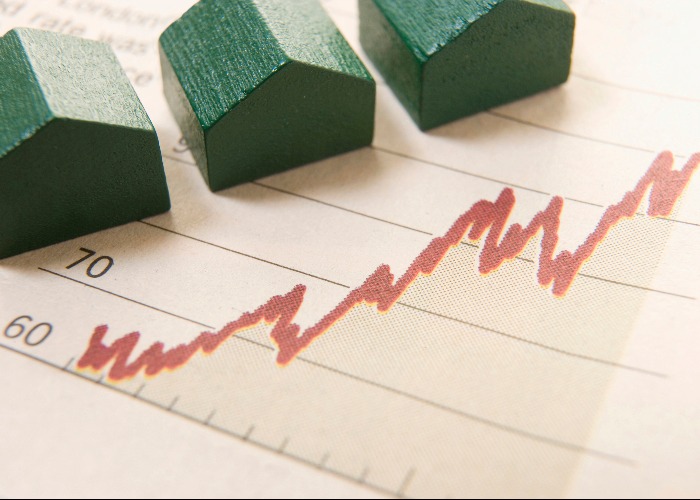The property hotspots of the next decade

Which towns will see a house price boom in the next ten years?
If you are looking for your next buy-to-let opportunity read on, as property experts have revealed the areas where prices are likely to boom over the next decade.
Estate agent HouseSimple has identified locations around the country where prices are currently lower than average, but likely to rise.
“With property prices in London reaching an extortionate high, investors are beginning to look to other areas of the country to dip into,” says a spokesperson for HouseSimple. “With the average UK home now valued at £204,674, and with house prices rising, buyers could potentially buy cheap in these up-and-coming areas and watch the value of their property rise quickly over time.”
1. Manchester
Average house price = £155,029

It’s a big city and prices rose 6% last year, but Manchester is still a lot cheaper for property than its southern counterparts.
“The BBC has relocated here and the Metrolink tram service has doubled in size,” says HouseSimple. “Plus, Wythenshawe Park is becoming a gigging hotspot for 50,000 music lovers.”
2. Rotherham
Average house price - £136,880

This Yorkshire town is “a perfect example of a coal mining town being reinvented,” says HouseSimple. A £500 million investment has been made in the town over the past decade, with approximately 9,000 jobs created.
The town also has a new railway station and football stadium. Despite this it is still possible to pick up a terraced house for just £84,580.
3. Birmingham
Average house price = £159,436

The eventual arrival of the HS2 rail link is expected to boost property prices in the UK’s second largest city. The east side of the city has received a £6 million investment to create new homes.
“Harborne in particular is on the up; a student and graduate hub with lots of young professionals with disposable income,” according to HouseSimple.
4. Leicester
Average house price = £163,548

A major project to improve transport connections in and around this East Midlands city make it one to watch. Other factors likely to help include the football stadium, university, museums, galleries and newly opened King Richard III Visitor Centre.
5. Hythe, Kent
Average house price = £287,077

The combination of great views of the sea along with a train station that is only 52 minutes from St Pancras makes Hythe a hot contender for rising property prices.
HouseSimple says: “Some estate agents here are offering free golf club memberships with houses.”
6. Norwich
Average house price = £196,472

A combination of beautiful historic buildings with modern facilities is making this an increasingly popular city, especially with people wanting second homes. The city has recently been targeted by the East of England Development Agency for regeneration.
7. Woking, Surrey
Average House Price = £404,489

A £50 million regeneration project is already underway here. Add that to the fact you are only 25 miles from central London, with both Heathrow and Gatwick airports easily accessible, and this town is clearly one to watch.
House prices have risen by 12% in a year.
8. Hove, East Sussex
Average House Price = £370,622

“Buzzing with young professionals this seaside town is a new leading property hotspot opposed to the usual Brighton. Beach front properties in Hove are on average 38% lower than in London, but still within commuting distance,” according to HouseSimple.
9. Ipswich
Average House Price = £179,936

A growing student population is expected to buy and rent here. On top of that the employment market is forecast to grow substantially and over 15,000 new homes are being planned.
The town has good transport connections, underdeveloped housing and commercial markets and has been labelled as a prime area for regeneration.
10. Ilkley, Bradford
Average House Price = £346,546

“A tourist destination in the Northern countryside hand-in-hand with a shopping town makes Ilkley one to watch on the property hotspot ladder,” says HouseSimple.
Convenient road links as well as two railway stations and a beautifully redeveloped shopping centre mean the area has “tremendous potential”.
Signs to look out for
If you want to know if an area is on the up, there are a few things to take a look at.
Local amenities
Are there supermarkets, schools and a train line within a five mile radius?
Crime rates
Unsurprisingly a low crime rate is crucial if house prices are going to rise.
Transport links
Look for areas that are just outside expensive postcodes, and have great transport options.
“Regeneration plans, a booming economy along with good transport routes are the key components when looking for the next up-and-coming area to make a property investment,” says a spokesperson for HouseSimple.
Cut the cost of your mortgage with loveMONEY
Now read this!
Sneaky ways to save money at Amazon
What bargains will Aldi sell online?
Most Recent
Comments
-
The England and wales Land Registry has a great online tool for looking at house prices. I looked at prices by region from Jan 2000 to current. While house prices hit a peak in 2008 in every region and then fell, those in the south have now overtaken that 2008 peak, while those in the north haven't. in the most northern regions house prices are flat for the past five years. The dividing line between north and South is from the severn to the wash. The northern regions are above a line from the Mersey to the Humber. Sales are only 2/3 of the levels pre 2008 in the South and circa 1/2 in the North. Nick I agree that debt levels are worrying. There's a lot of statistics here: http://themoneycharity.org.uk/money-statistics/ But at least mortgage arrears are down from 81,469 in Q1 2009 to 28,749 in Q1 2015. With mortgages now being granted under much tougher rules than in the past borrowers will be in a better position to cope with increased interest rates. For all our sakes I really hope so!
REPORT This comment has been reported. -
What happens when interest rates rise, and this orgy of debt grinds to a halt?
REPORT This comment has been reported.
Do you want to comment on this article? You need to be signed in for this feature









08 October 2015